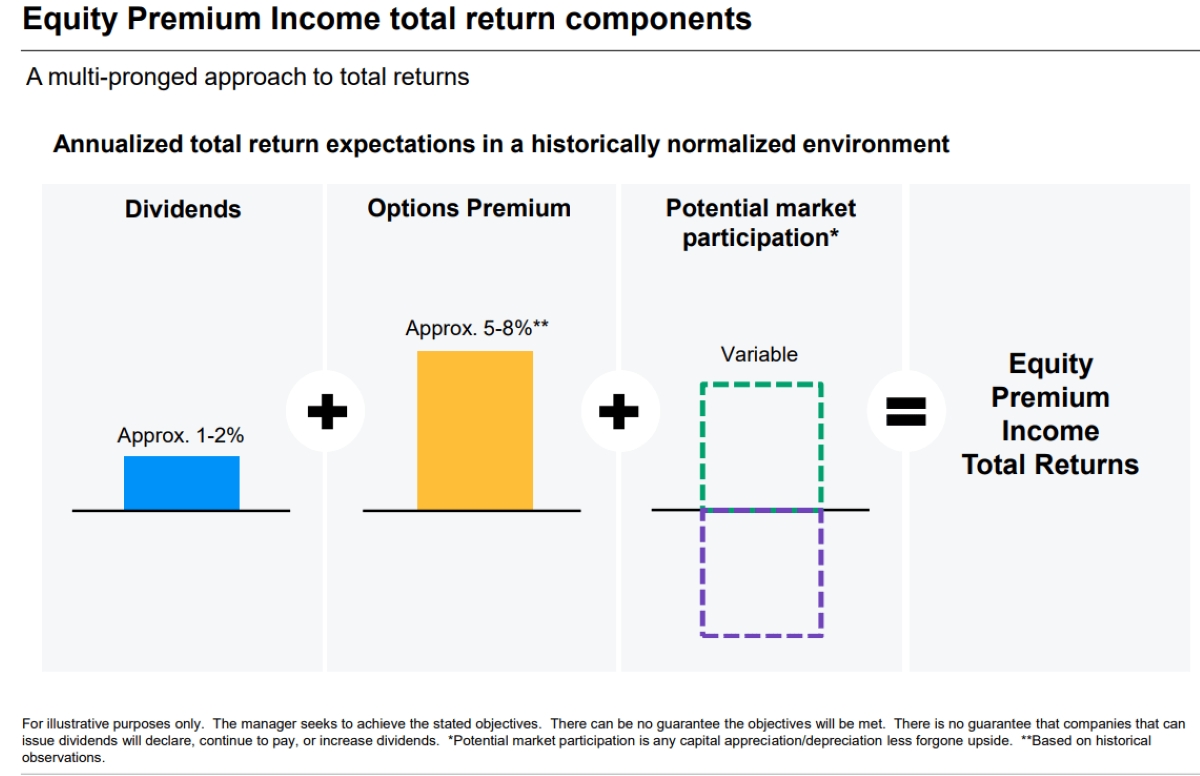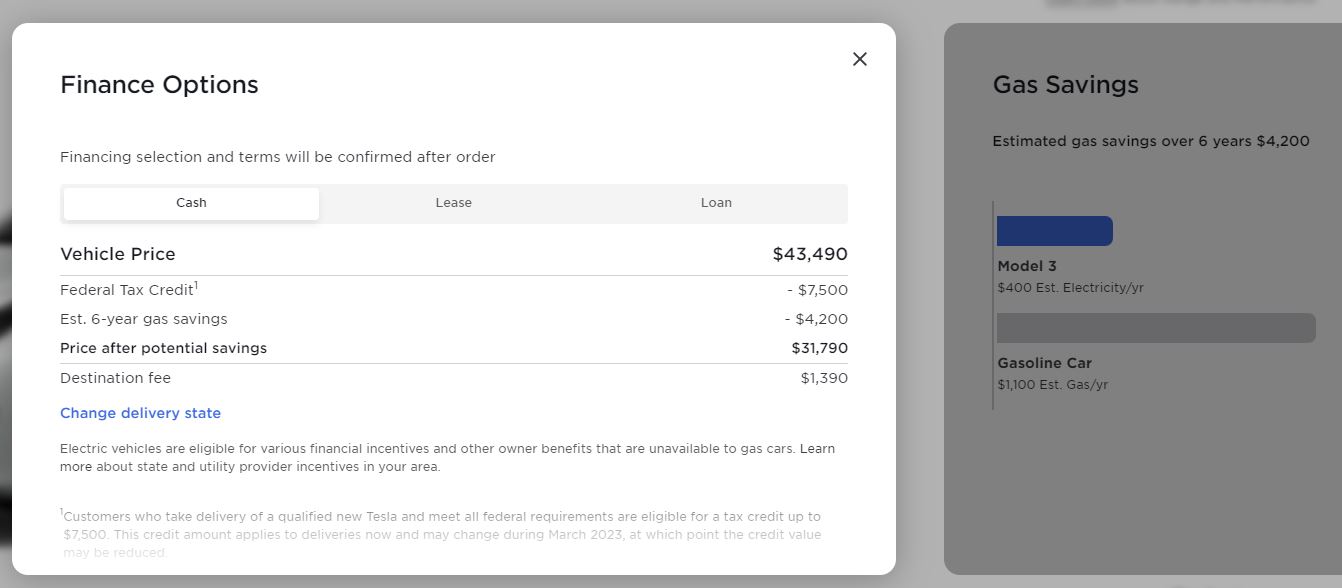

Finance
How To Pay Yourself S Corp Dividends
Modified: February 21, 2024
Learn the ins and outs of paying yourself S Corp dividends and managing your finances with expert tips and advice in this comprehensive guide on finance.
(Many of the links in this article redirect to a specific reviewed product. Your purchase of these products through affiliate links helps to generate commission for LiveWell, at no extra cost. Learn more)
Table of Contents
- Introduction
- Understanding S Corporations
- What Are S Corp Dividends?
- Eligibility for Receiving S Corp Dividends
- Determining the Amount of S Corp Dividends
- Tax Implications of S Corp Dividends
- Methods of Paying Yourself S Corp Dividends
- Documenting S Corp Dividend Payments
- Reporting S Corp Dividends on Personal Tax Returns
- Conclusion
Introduction
Welcome to the world of S corporations and the fascinating topic of paying yourself S corp dividends. As a business owner, you have made the wise decision to structure your company as an S corporation, taking advantage of its unique tax benefits and liability protection. Now, you may be wondering how you can compensate yourself for your hard work and dedication while complying with legal and financial regulations.
In this article, we will delve into the intricacies of S corp dividends and provide you with a comprehensive guide on how to pay yourself dividends as an S corporation owner. We will explore the eligibility criteria for receiving S corp dividends, discuss the methods of determining the amount to be paid, and unravel the tax implications associated with such payments.
Understanding the ins and outs of S corp dividends is crucial for any S corporation owner who wishes to strike a balance between personal compensation and sustaining the financial health of their business. By following the guidance provided within this article, you will gain the knowledge and confidence needed to make informed decisions regarding S corp dividends.
Before we embark on this journey, let’s take a moment to familiarize ourselves with what S corporations are and how they function.
Understanding S Corporations
S corporations, short for Subchapter S corporations, are a popular business entity structure that combines the benefits of a corporation with the tax advantages of a partnership. This form of business structure allows owners to enjoy limited liability protection while avoiding double taxation that typically occurs with traditional C corporations.
One of the key features of an S corporation is the pass-through taxation method. Unlike C corporations, S corporations do not pay federal income taxes at the corporate level. Instead, the profits and losses of the business are “passed through” to the shareholders, who report them on their personal tax returns.
Another important aspect of S corporations is the limitation on the number and type of shareholders. To qualify as an S corporation, the business must have no more than 100 shareholders, and all shareholders must be individuals, certain trusts, or estates. Non-resident aliens and partnerships cannot be shareholders in S corporations.
S corporations are often favored by small to mid-sized businesses that want to enjoy the benefits of limited liability and pass-through taxation. By electing S corporation status, business owners can separate their personal assets from business liabilities and potentially reduce their overall tax burden.
Now that we have a basic understanding of S corporations, let’s dive deeper into the topic of S corp dividends and how they play a role in compensating business owners.
What Are S Corp Dividends?
S corp dividends, also known as shareholder distributions, are payments made to the owners of an S corporation from the company’s profits. These dividends are a way for S corporation shareholders to receive a return on their investment and compensate themselves for their role in the business.
It is important to note that S corp dividends are distinct from employee salaries or wages. While compensation for services rendered by shareholders can take the form of salaries or bonuses, dividends are typically reserved for the distribution of profits to the owners.
Unlike salaries or wages, S corp dividends are not subject to payroll taxes such as Social Security and Medicare. This provides a potential tax advantage to shareholders who receive a significant portion of their income through dividend payments rather than through wages.
However, it is crucial to ensure that the distribution of S corp dividends is done in accordance with legal and financial regulations. Improperly classifying payments as dividends instead of wages to avoid payroll taxes can result in severe penalties and legal consequences.
Additionally, the amount of S corp dividends that can be distributed is subject to certain restrictions. These restrictions are put in place to prevent abuse and ensure fair treatment of shareholders. It is important to understand the eligibility criteria for receiving S corp dividends and the methods of determining the appropriate amount to be distributed.
In the following sections, we will explore the requirements for receiving S corp dividends, the calculations involved in determining the dividend amount, and the tax implications of these payments. Understanding these factors will help you navigate the process of paying yourself as an S corporation owner while maintaining compliance with the law.
Eligibility for Receiving S Corp Dividends
Not all S corporation shareholders are automatically eligible to receive dividends. There are certain criteria that must be met in order to qualify for these distributions. Let’s explore the eligibility requirements for receiving S corp dividends:
- Ownership status: To be eligible for S corp dividends, you must be a shareholder of the S corporation. This means that you have invested capital into the business and hold shares of stock.
- Proportionate ownership: S corp dividends must generally be distributed to shareholders in proportion to their ownership stake in the company. For example, if you own 30% of the company’s shares, you should receive 30% of the total dividend amount.
- Valid stock ownership: Shareholders must have valid and properly issued stock. The ownership of stock should be clearly recorded and documented to ensure compliance with legal requirements.
- Reasonable compensation: S corporation owners must also ensure that they are receiving reasonable compensation for the services they provide to the company. This compensation is typically in the form of salaries or wages and should reflect the fair market value of the services rendered.
- Compliance with shareholder agreements: If the S corporation has a shareholder agreement in place, shareholders must comply with its provisions when it comes to dividend distributions. The agreement may outline specific rules or restrictions regarding dividend payments.
It is essential to consult with a qualified tax professional or attorney to ensure that you meet all the eligibility criteria for receiving S corp dividends. They can help you navigate any complex legal and financial requirements to avoid any potential issues.
Next, we will explore how the amount of S corp dividends is determined.
Determining the Amount of S Corp Dividends
Once you meet the eligibility criteria for receiving S corp dividends, the next step is to determine the appropriate amount to distribute. While there is flexibility in deciding the dividend amount, it is important to strike a balance between compensating yourself as a business owner and maintaining the financial health of the company. Here are some factors to consider when determining the amount of S corp dividends:
- Available profits: The first step is to assess the financial health of your S corporation and determine the amount of profits available for distribution. These profits are typically derived from the company’s net income after accounting for expenses, taxes, and any necessary reserves.
- Shareholder’s proportionate ownership: As mentioned earlier, S corp dividends are generally distributed in proportion to the shareholders’ ownership stakes. This means that the percentage of shares owned by each shareholder will determine their share of the dividend payment.
- Consideration of other forms of compensation: It is important to consider the overall compensation package for S corporation owners, which may include salaries, bonuses, and other benefits in addition to dividend payments. By considering the various forms of compensation, you can ensure that the total amount is fair and reflective of the value contributed by each owner.
- Business growth and reinvestment: As a responsible business owner, it is essential to consider the future needs of your company. If the business has plans for expansion, investment in new ventures, or the creation of reserves, it may be necessary to allocate a portion of the profits for these purposes rather than distributing them all as dividends.
- Consultation with professionals: It is highly recommended to consult with a qualified tax professional or financial advisor when determining the amount of S corp dividends. They can provide valuable insights and expertise to help you make informed decisions while considering the legal, financial, and taxation implications.
By carefully considering these factors and seeking professional guidance, you can ensure that the amount of S corp dividends is both reasonable and compliant with applicable regulations.
In the next section, we will explore the tax implications associated with S corp dividends.
Tax Implications of S Corp Dividends
Understanding the tax implications of S corp dividends is crucial for both S corporation owners and shareholders. While S corp dividends offer potential tax advantages, it is essential to navigate the tax rules and regulations to ensure compliance. Here are some key points to consider regarding the tax implications of S corp dividends:
- Pass-through taxation: S corporations are subject to pass-through taxation, meaning that the company itself does not pay federal income taxes. Instead, the profits and losses of the business are passed through to the shareholders, who report them on their personal tax returns.
- Dividends and ordinary income: S corp dividends are generally considered ordinary income for tax purposes. This means that they are subject to taxation at the individual shareholder’s ordinary income tax rates.
- Payroll taxes: Unlike wages or salaries, S corp dividends are not subject to payroll taxes, such as Social Security and Medicare taxes. This can provide potential tax savings for shareholders who receive a significant portion of their income through dividend payments.
- Qualified dividends: In certain cases, S corp dividends may qualify for lower tax rates. To be classified as qualified dividends, the dividends must meet specific criteria set by the Internal Revenue Service (IRS), including various holding period requirements.
- Basis and distribution rules: Shareholders must take into account their basis in the S corporation stock when receiving dividend payments. The basis represents the shareholder’s investment in the company and can affect the tax treatment of the dividends received.
- Tax planning: Effective tax planning is crucial when it comes to S corp dividends. By coordinating with tax professionals, you can maximize tax benefits, minimize tax liabilities, and ensure compliance with the ever-changing tax laws.
It is important to note that tax laws and regulations surrounding S corp dividends can be complex and may vary depending on individual circumstances. Therefore, it is highly recommended to consult with a qualified tax professional who can provide personalized advice based on your specific situation.
Next, we will explore the methods of paying yourself S corp dividends as a business owner.
Methods of Paying Yourself S Corp Dividends
As an S corporation owner, there are several methods you can use to pay yourself dividends. It is important to select the method that best aligns with your financial goals and complies with legal and tax requirements. Here are some common methods of paying yourself S corp dividends:
- Direct bank transfers: One simple and straightforward method is to pay yourself S corp dividends through direct bank transfers. You can transfer the dividend amount directly from the business account to your personal bank account. Ensure that proper documentation is maintained to track the dividend payments.
- Check payments: Another traditional method is to issue yourself a check for the dividend amount. This provides a paper trail and can be easily recorded in the company’s financial records. Remember to keep copies of the checks for documentation purposes.
- Electronic funds transfer (EFT): With the advancement of technology, electronic funds transfer (EFT) has become a popular method of transferring dividend payments. You can set up a secure EFT system to transfer the funds directly to your personal bank account.
- Distribution accounts: Some S corporations may establish separate distribution accounts for each shareholder. These accounts can be used to track and record dividend payments. The funds are then distributed to the shareholders based on their ownership percentage.
- Declaration and recordkeeping: Regardless of the method chosen, it is essential to document the declaration and payment of S corp dividends. This includes recording the date, amount, and recipient of the dividend payment. Keeping accurate records is crucial for tax reporting and compliance.
While these methods provide flexibility in paying yourself S corp dividends, it is important to remember that each method may have varying implications regarding documentation, tax reporting, and financial recordkeeping. It is advisable to consult with a qualified accountant or tax professional to ensure that the chosen method aligns with your specific circumstances and meets all legal requirements.
Next, we will discuss the importance of documenting S corp dividend payments.
Documenting S Corp Dividend Payments
Proper documentation of S corp dividend payments is essential for maintaining accurate financial records, complying with legal requirements, and providing evidence in case of an audit. As an S corporation owner, it is crucial to establish a systematic approach to documenting dividend payments. Here are some important considerations:
- Dividend declaration: Begin by formalizing the declaration of S corp dividends. This can be done through a resolution or minutes of a meeting, clearly stating the decision to distribute dividends, the amount to be distributed, and the date of declaration.
- Recordkeeping: Maintain detailed records of all dividend payments, including the date, amount, and recipient of each payment. It is recommended to have a separate ledger or a dedicated section in the company’s financial records specifically for tracking dividend distributions.
- Supporting documents: Keep supporting documents such as bank statements, canceled checks, or electronic transfer receipts as evidence of the dividend payments. These documents can be crucial in case of any disputes or inquiries.
- Consistency: Ensure consistency in the timing and frequency of dividend payments. By establishing a regular schedule, you can maintain a clear pattern of distributions and demonstrate adherence to legal and tax rules.
- Shareholder agreements: If your S corporation has a shareholder agreement in place, review the document for any specific provisions regarding dividend payment documentation. Adhere to the guidelines outlined in the agreement to ensure compliance.
- Tax reporting: Accurate documentation of dividend payments is crucial for proper tax reporting. The IRS may require you to report dividend payments on specific forms, such as Form 1099-DIV. Ensure that all necessary tax forms are completed accurately and submitted timely.
By maintaining thorough and organized documentation of S corp dividend payments, you can help ensure transparency, accountability, and compliance with legal and tax regulations. Proper documentation also aids in providing a clear financial picture of the company, facilitating financial analysis and decision-making.
In the next section, we will discuss how to report S corp dividends on personal tax returns.
Reporting S Corp Dividends on Personal Tax Returns
Reporting S corp dividends on personal tax returns is an important step in fulfilling your tax obligations as an S corporation shareholder. Proper reporting ensures compliance with tax laws and enables accurate assessment of your personal tax liability. Here’s what you need to know about reporting S corp dividends:
- Form 1099-DIV: As an S corporation shareholder, you may receive a Form 1099-DIV from your S corporation at the end of the tax year. This form provides you with information about the dividends you received, including the total amount and any qualified dividends.
- Schedule B: On your personal tax return, you will need to complete Schedule B, which reports interest and dividend income. Enter the total amount of S corp dividends you received on this form.
- Ordinary income: S corp dividends are generally treated as ordinary income for tax purposes, subject to your individual tax rates. Report the dividend income on the appropriate lines of your tax return, as instructed by the tax forms and instructions provided by the IRS.
- Qualified dividends: If your S corporation dividends meet specific criteria outlined by the IRS, they may qualify for lower tax rates. Report any qualified dividends separately on your tax return using the appropriate tax forms and instructions.
- Basis calculation: Properly calculating your basis in the S corporation stock is important for determining the tax treatment of dividends. Maintain accurate records of your stock purchases, capital contributions, distributions, and any adjustments to your basis over time.
- Consult a tax professional: S corp dividends and their tax implications can be complex. It is highly recommended to consult a qualified tax professional for personalized advice related to reporting your specific dividend income on your personal tax return.
By accurately reporting your S corp dividends on your personal tax return and following the instructions provided by the IRS, you can ensure compliance with tax laws and minimize the risk of audit or penalties.
Finally, let’s conclude our discussion on paying yourself S corp dividends as a business owner.
Conclusion
Congratulations! You have now gained a comprehensive understanding of how to pay yourself S corp dividends as a business owner. By structuring your company as an S corporation, you can enjoy the benefits of pass-through taxation and limited liability protection. Paying yourself S corp dividends is a way to compensate yourself for your hard work and investment in the business while navigating legal and financial regulations.
Throughout this article, we have covered key aspects of S corp dividends, including eligibility criteria, determining the dividend amount, tax implications, methods of payment, and the importance of proper documentation. By adhering to these guidelines and seeking professional advice when needed, you can ensure compliance and make informed decisions regarding your dividend payments.
Remember, it is crucial to consult with a qualified tax professional or financial advisor who can provide personalized guidance based on your specific situation. They can help you navigate the complex tax rules, assist with accurate reporting on your personal tax return, and ensure that you maximize the tax benefits available to you.
As you continue your journey as an S corporation owner, maintaining a balance between personal compensation and the financial health of your business is paramount. By carefully managing your S corp dividends, you can reward yourself for your entrepreneurial efforts, attract and retain shareholders, and contribute to the long-term success of your business.
Keep in mind that tax laws and regulations can change over time, so it is important to stay informed and adapt your dividend payment strategies accordingly. Ongoing education and collaboration with professionals will help you stay ahead and make the most of the opportunities available to you.
Armed with this knowledge, you are now well-equipped to navigate the world of S corp dividends and make sound financial decisions for yourself and your business. Best of luck as you continue to grow and thrive as an S corporation owner!














